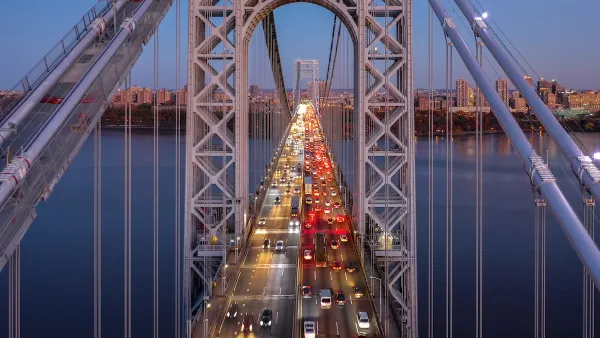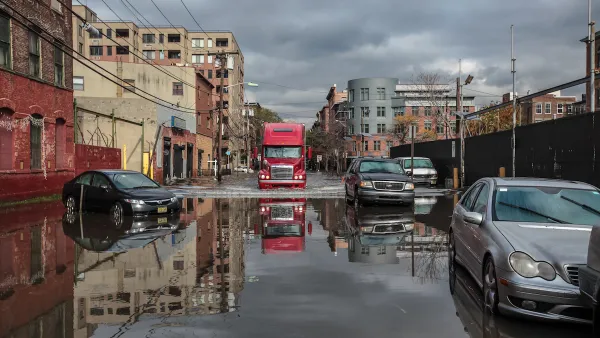By partnering with banks, real estate developers and nonprofit groups, New York City will assist some 10,000 buildings to convert to cleaner fuel, a major step in reaching PlaNYC's goal of having the cleanest air of any major U.S. city.
New York City is accelerating its push to get cleaner fuel into the city's buildings. Alex Goldmark explains the challenge, "Just one percent of buildings in New York still burn heavy forms of heating oil, but those 10,000 polluters spew more soot than all the vehicle traffic in the whole city." This heavy and cheap oil, called Number 6, is estimated to cause 3,000 deaths each year.
To help these buildings convert to cleaner heating fuels, the city launched NYC Clean Heat, a program that provides information about technical help, financial help, and regulations. The conversion process will be expensive for each building, but the city wants to alleviate some of the financial pressure.
"The city partnered with banks, real estate developers and nonprofit groups to structure plans to fund $100 million in boiler conversions and offer other resources like technical consulting to help the process along. ‘By phasing out heavy heating oils, we are closer to achieving our PlaNYC goal for the cleanest air of any major U.S. city,' said Mayor Bloomberg as he touted a new target to reduce soot pollution by 50 percent by 2013, something he estimates will save 120 lives and preventing 300 asthma-related hospital visits."
According to Fred Krupp, president of the Environmental Defense Fund, "Upgrading these buildings to cleaner heating fuel is the single largest step New Yorkers can take to solve local air pollution."
FULL STORY: New York City's Dirty 10,000 Get Paid To Clean Up

National Parks Layoffs Will Cause Communities to Lose Billions
Thousands of essential park workers were laid off this week, just before the busy spring break season.

Retro-silient?: America’s First “Eco-burb,” The Woodlands Turns 50
A master-planned community north of Houston offers lessons on green infrastructure and resilient design, but falls short of its founder’s lofty affordability and walkability goals.

Delivering for America Plan Will Downgrade Mail Service in at Least 49.5 Percent of Zip Codes
Republican and Democrat lawmakers criticize the plan for its disproportionate negative impact on rural communities.

Test News Post 1
This is a summary

Test News Headline 46
Test for the image on the front page.

Balancing Bombs and Butterflies: How the National Guard Protects a Rare Species
The National Guard at Fort Indiantown Gap uses GIS technology and land management strategies to balance military training with conservation efforts, ensuring the survival of the rare eastern regal fritillary butterfly.
Urban Design for Planners 1: Software Tools
This six-course series explores essential urban design concepts using open source software and equips planners with the tools they need to participate fully in the urban design process.
Planning for Universal Design
Learn the tools for implementing Universal Design in planning regulations.
EMC Planning Group, Inc.
Planetizen
Planetizen
Mpact (formerly Rail~Volution)
Great Falls Development Authority, Inc.
HUDs Office of Policy Development and Research
NYU Wagner Graduate School of Public Service




























